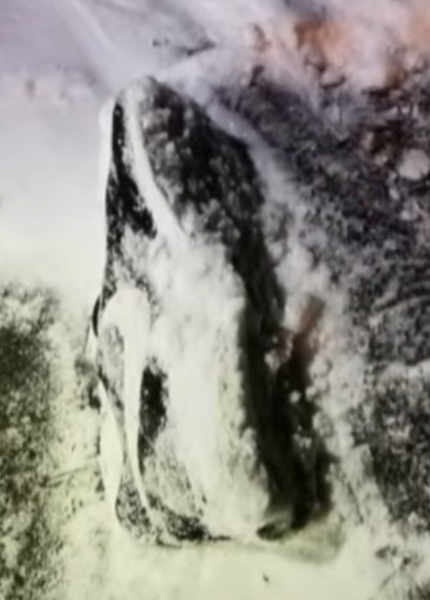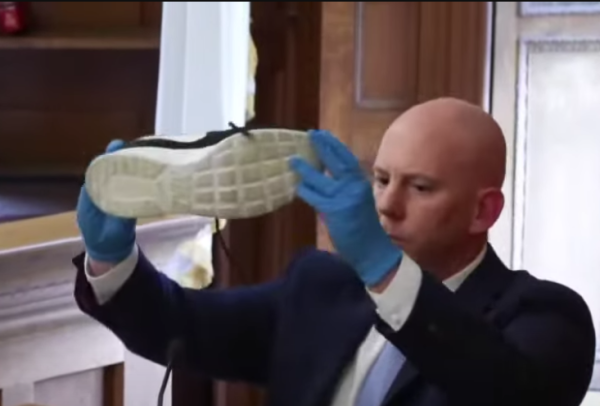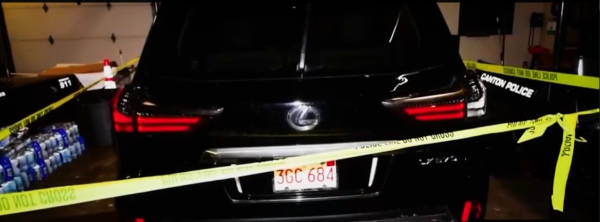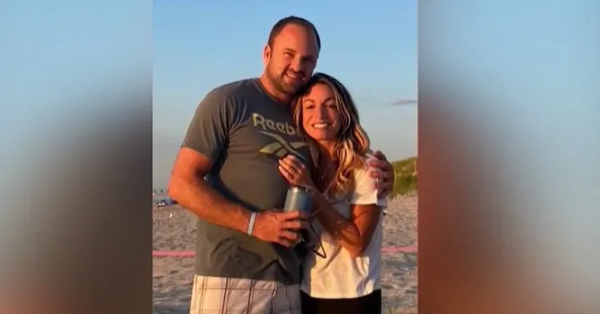You are using an out of date browser. It may not display this or other websites correctly.
You should upgrade or use an alternative browser.
You should upgrade or use an alternative browser.
Karen Read accused of backing into boyfriend and leaving him to die *MISTRIAL*
- Thread starter Cousin Dupree
- Start date
Summer_Breeze
"Blowing through the jasmine in my mind"
On cross, Ms. Hyde states that Lt. Tully limited her review to Safari data on 1/29. Cross completed, no redirect. Next up is Trooper Paul, accident/collision reconstruction specialist.
Summer_Breeze
"Blowing through the jasmine in my mind"

Car crash, cellphone experts testify in Karen Read trial after chaotic morning
What was expected to be another full day of testimony is underway Friday in the Karen Read murder trial, following a day focused on cell phone records and DNA recovered from where Boston Police Officer John O’Keefe was found dead. A cellphone data forensics analyst testified about the search...
 www.nbcboston.com
www.nbcboston.com
Hyde was briefly cross-examined by defense attorney David Yannetti, who pressed her on whether the evidence she went through would rule out McCabe making the search at 2:27 a.m.
She insisted it was unlikely, but couldn't rule it out.
She also noted, when asked, that the data she went through was provided by state police.
Summer_Breeze
"Blowing through the jasmine in my mind"
Lunch recess 45 minutes
Summer_Breeze
"Blowing through the jasmine in my mind"

Car crash, cellphone experts testify in Karen Read trial after chaotic morning
What was expected to be another full day of testimony is underway Friday in the Karen Read murder trial, following a day focused on cell phone records and DNA recovered from where Boston Police Officer John O’Keefe was found dead. A cellphone data forensics analyst testified about the search...
 www.nbcboston.com
www.nbcboston.com

Car crash, cellphone experts testify in Karen Read trial after chaotic morning
What was expected to be another full day of testimony is underway Friday in the Karen Read murder trial, following a day focused on cell phone records and DNA recovered from where Boston Police Officer John O’Keefe was found dead. A cellphone data forensics analyst testified about the search...
 www.nbcboston.com
www.nbcboston.com
Mass. State Police crash expert testifies on Fairview Road, Canton, scene
Next, Assistant District Attorney Adam Lally called Massachusetts State Police Trooper Joseph Paul, a crash reconstruction analyst.Paul said he was called to examine Read's SUV after it allegedly hit O'Keefe. He said he went to both the scene of O'Keefe's death and Canton police headquarters as part of his investigation.
Using a variety of tools, including a drone, Paul mapped where O'Keefe's body was found in the snow. A foot away was a glass cup, and nine feet away was his shoe. Pieces of red and clear plastic were found nearby as well.

Guess Who
Well-known member
So we're to believe she managed to jump the curb 6-8 ft, miss the fire hydrant and the flag pole while backing up at 24 mph in a blizzard while drunk.

Car crash, cellphone experts testify in Karen Read trial after chaotic morning
What was expected to be another full day of testimony is underway Friday in the Karen Read murder trial, following a day focused on cell phone records and DNA recovered from where Boston Police Officer John O’Keefe was found dead. A cellphone data forensics analyst testified about the search...www.nbcboston.com
Mass. State Police crash expert testifies on Fairview Road, Canton, scene
Next, Assistant District Attorney Adam Lally called Massachusetts State Police Trooper Joseph Paul, a crash reconstruction analyst.
Paul said he was called to examine Read's SUV after it allegedly hit O'Keefe. He said he went to both the scene of O'Keefe's death and Canton police headquarters as part of his investigation.
Using a variety of tools, including a drone, Paul mapped where O'Keefe's body was found in the snow. A foot away was a glass cup, and nine feet away was his shoe. Pieces of red and clear plastic were found nearby as well.

Guess Who
Well-known member
Oh, and nobody testified to seeing the tracks in the yard that this would have madeSo we're to believe she managed to jump the curb 6-8 ft, miss the fire hydrant and the flag pole while backing up at 24 mph in a blizzard while drunk.
Guess Who
Well-known member
That's a million dollar question.A couple of things I don't quite get about this. He got out the passenger side and then she reversed right? So how exactly did she hit him?
Also, if she knew she had hit him and injured or killed him, why did she want to go back to the scene at all?
Guess Who
Well-known member
If you would see all the blunders they made "investigating" this, you would certainly question these things. The defense hasn't even had their turn yet!A couple of things I don't quite get about this. He got out the passenger side and then she reversed right? So how exactly did she hit him?
Also, if she knew she had hit him and injured or killed him, why did she want to go back to the scene at all?
Cousin Dupree
Glory to #Ukraine 🇺🇦✊🏻
Is there footage from the bar showing him wearing a coat as he left?
Guess Who
Well-known member
He definitely didn't have one on at the bar while standing around.Is there footage from the bar showing him wearing a coat as he left?


To hopefully put an end to the shoe discussion the picture on the left is the one found at the scene which was presented in court by Trooper Brian Tully.
*(since this thread can sometimes move a bit fast I apologize if some links and/or images have been removed with trying to keep on topic of the case against Karen Read)
Summer_Breeze
"Blowing through the jasmine in my mind"
Sidebar.
Cousin Dupree
Glory to #Ukraine 🇺🇦✊🏻
While this boring dude is testifying, I started looking around for stuff. In this video is this image:

 www.courttv.com
www.courttv.com

They also go in depth on the faked video.

Killer or Cover-Up Trial: Day 21 Recap
The defense raised questions while cross-examining a detective after revealing that surveillance video was inverted but the jury was not told.
 www.courttv.com
www.courttv.com

They also go in depth on the faked video.
Summer_Breeze
"Blowing through the jasmine in my mind"
Jury has been excused. Further questioning of Trooper Paul for the purpose of helping the judge with upcoming voir dire of the experts.
Summer_Breeze
"Blowing through the jasmine in my mind"

Karen Read murder trial testimony focuses on "how long to die in cold" search, SUV driving in reverse
The Karen Read murder trial resumed Friday in Norfolk Superior Court in Dedham, Massachusetts with more testimony from prosecution witnesses.
By Mike Toole, Victoria D, Kristina Rex
Updated on: June 14, 2024 / 3:26 PM EDT / CBS Boston
Google search of how long to die in the cold
Jessica Hyde, a digital forensics examiner, was the first witness to take the stand Friday. She works for a company in upstate New York called Hexordia, which specializes in digital forensics training.The video player is currently playing an ad. You can skip the ad in 5 sec with a mouse or keyboard
Hyde was asked by both the prosecution and the defense to look at time stamps and review Google searches made by Jennifer McCabe.
Earlier in the trial, McCabe, who was with Read while they searched for O'Keefe in the snowstorm, was questioned about a Google search she made that morning. She said Read asked her to look up how long it would take someone to die in the cold after they found O'Keefe's body.
The prosecution said the searches were done at 6:23 a.m. and 6:24 a.m. on January 29, 2022. The defense said the time stamp was actually 2:27 a.m., hours before O'Keefe was found.
Hyde told the court Friday that 2:27 a.m. could be the time the search tab was originally opened or moved. She said the last search in McCabe's phone was at 6:24 a.m.
"What's very special to know about this time stamp is that it's not necessarily the time of the search," she told the court. "I don't see evidence that the term was searched prior to that 6:24 time."
During a brief cross examination, Read's attorney David Yannetti asked Hyde if she could rule out that the owner of the phone conducted a Google search at 2:27 a.m. Hyde said she can't "rule out something that doesn't exist," adding it's the same as asking if there was a search for "pandas," which there is no evidence of.
Crash reconstructionist testifies
After Hyde finished her testimony, Massachusetts State Trooper Joe Paul took the stand.He is a crash reconstructionist and described how the testing process works. He said two acceleration and deceleration tests were done on Read's SUV. He added there was no airbag deployment data, something Paul said isn't unusual in a pedestrian crash. From data gathered from the SUV, it shows it went in drive, then reverse, at the time the SUV was in front of 34 Fairview Road, according to Paul. During the trigger event taken down by the SUV's Toyota techstreams software, the SUV slowed down to zero and then up to 24.2 miles per hour.
"It starts off in drive, it's slowing down to zero, and it goes to zero, which is neutral, then it goes into reverse," described Paul. "So it's going straight, it stops, then gets placed in reverse and then it goes in reverse." Paul said the SUV was backing up in a straight line and going about 24.2 miles per hour.
"There's a point in there where it appears to be consistent with a pedestrian strike," said Paul, referring to the sudden change of speed. Paul added O'Keefe's injuries were also consistent with a pedestrian strike.
Cousin Dupree
Glory to #Ukraine 🇺🇦✊🏻
Why isn't the defense asking for the video to be replayed. In the video, the prosecution showed there is definite movement on O'Keefe's tires .
Cousin Dupree
Glory to #Ukraine 🇺🇦✊🏻
Watch until 31 seconds in. The close up of the tire rocks. It's completely stationary and then rocks a bit and she drives away.

